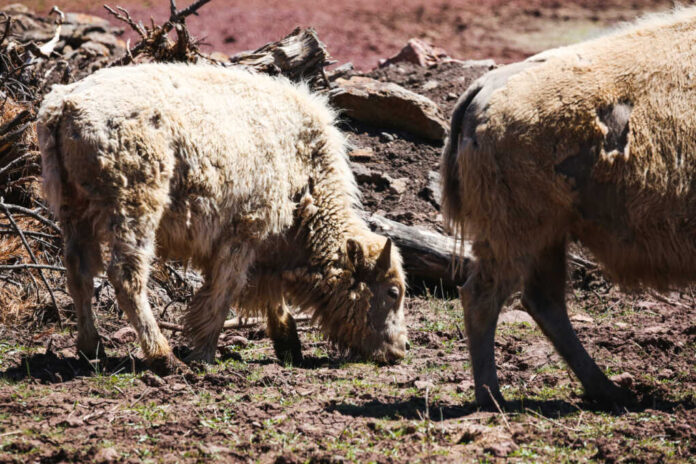
A white bison calf, born on June 4 in Yellowstone National Park, has gone missing, stirring concern among Native American tribes and park officials. The calf, which holds significant cultural importance, was last seen in Lamar Valley. Park authorities have been unable to locate it despite multiple credible sightings.
This particular calf, known as leucistic, has black eyes and pigmented hooves, distinguishing it from an albino bison. The rarity of such a birth is notable, as it is believed to occur only once in a million births. This event highlights the success of Yellowstone’s bison recovery efforts, which have seen the population grow to between 3,000 and 6,000 animals.
The Great Sioux Nation’s Chief Arvol Looking Horse, a respected spiritual leader, named the calf Wakan Gli, meaning Sacred Return, during a ceremony in West Yellowstone, Montana. This ceremony, held on June 26, was attended by about 500 people, including many Native American tribes.
The birth of a white bison is seen as fulfilling an ancient prophecy, regarded as both a blessing and a warning. Chief Looking Horse emphasized the importance of unity and positive change for future generations, echoing the prophecy’s message that humanity stands at a crossroads.
Bison calving generally happens in late spring and early summer, but about 20% of bison calves die shortly after birth due to natural hazards. Despite this, there is hope that the missing calf, Wakan Gli, is still alive. Mike Mease, co-founder of the Buffalo Field Campaign, expressed optimism that the calf might be in an area less frequented by visitors. Mease believes the prophecy’s message remains powerful, whether the calf is found alive or not.
In a related incident, an albino bison calf was born on a Texas ranch, marking another rare occurrence. This albino calf, born to two blond bison, highlights the genetic diversity and unique occurrences within the bison population.
The disappearance of the white bison calf has sparked a wave of concern and hope among those aware of its cultural significance. Many are calling for efforts to locate the calf, while others focus on the broader message of the prophecy and the need for societal change.














